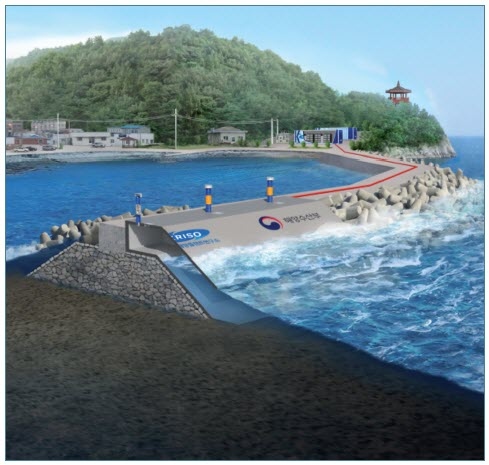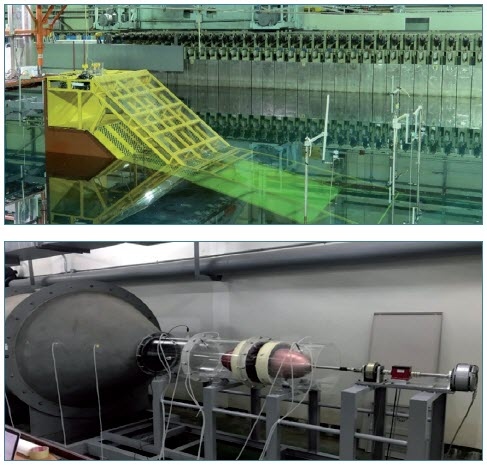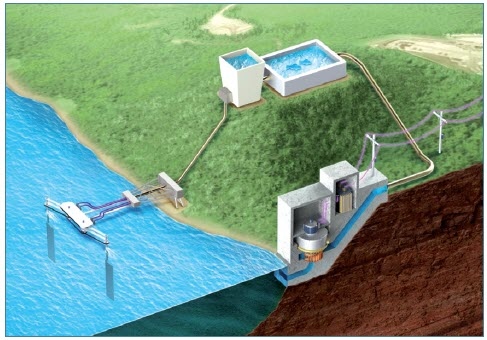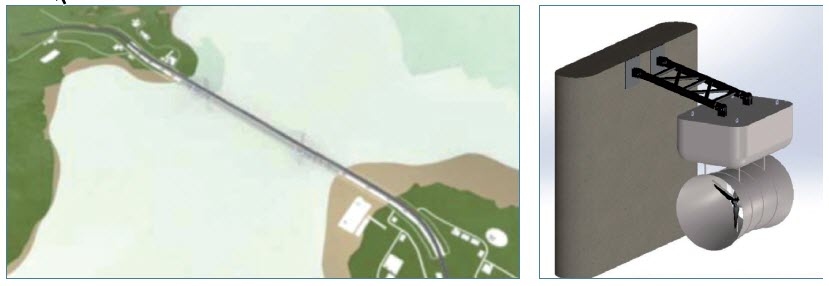REPUBLIC OF KOREA
RESEARCH & DEVELOPMENT
Wave Energy Converter with Energy Storage System Applicable to Breakwaters on Remote Island
The present research project is aimed to establish the commercializing foundation for the ocean energy by developing wave energy converters and the integrated energy storage system (ESS), applicable to the breakwaters in harbours and ports on remote islands. Conceptual and basic designs of the wave power generation system were carried out from 2016 to 2017. Since most of the breakwaters are sloped, an oscillating water column (OWC) with sloped shape was designed. Numerical and model tests showed that the sloped OWC has acceptable performance compared to the existing vertically installed OWCs. A high efficient turbine was developed by applying a ring to an impulse turbine. A permanent magnet synchronous generator (PMSG) and connected power conditioning system (PCS) were developed taking into consideration of the maintenance and the mitigation of vibration and noise of the system. The ESS and micro gird system was implemented by analysing the electrical environment of the installation site, Chu-ja Island of Korea.
 WEC applicable to breakwaters on remote island |
 Model tests for the OWC & impulse turbine |
|
Tidal Current and Pumped Storage Hybrid Power Generation The development period for this project is approximately three years and is supported by the New & Renewable Energy R&D programme of the Korea Institute of Energy Technology Evaluation and Planning (KETEP) grant funded by MOTIE. The main research contents for this project are (1) the development of design technology for the tidal current and pumped storage hybrid power generation system and (2) the demonstration of indoor and outdoor experiments for the tidal current pumped storage hybrid power generation system. |
 A schematic of the tidal current and pumped storage hybrid power generation system |
Design and Performance Test of Tidal Turbine for Self-Sufficient Energy Bridge
Around long span offshore bridges between islands or island and mainland, there are abundant ocean energy resources such as tidal current and wind induced waves. Especially strong current is induced near the bridge area owing to the narrow channel where water flow can concentrate. The goal of this project is to develop an optimal tidal energy converter for supplying electricity from tidal energy into the bridge and to commercialize the zero emission bridge technology to reduce operational costs for energy consumption and environmental effects. The tidal current power system is being designed to be suitable for the bridge, and it includes tidal energy converter (turbine, duct, generator, etc.), buoyancy tank, ESS for load levelling, and comprehensive control and monitoring system. This project is being carried out for 3 years from 2015 to 2018 with the financial support of KETEP by Korea Marine Equipment Research Institute (KOMERI). In 2017, the design and manufacture of the ducted tidal energy converter, floating body, power converter and monitoring system were completed. The open sea test is scheduled for March 2018. This technology is expected to accelerate the commercialization of tidal energy converters that facilitate the construction at low cost compared to the existing systems and the application not only for the bridge but also the discharge channels of power plants, rivers and island areas for isolated grid.

Long span bridge on narrow channel Conceptual design



